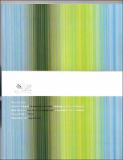| dc.contributor.author | Purba, Rudiarman | |
| dc.date.accessioned | 2018-03-17T00:41:19Z | |
| dc.date.available | 2018-03-17T00:41:19Z | |
| dc.date.issued | 2017-06-01 | |
| dc.identifier.citation | AUSTIN. J. L (1962), Chomsky. N. (1968), Clark and Clark (1981), Fishman A.J.(1972) | en_US |
| dc.identifier.issn | 2559-9506 | |
| dc.identifier.uri | http://repository.uhn.ac.id/handle/123456789/560 | |
| dc.description | This research is the study on the speech acts in Simalungunese Burial Ceremony. The purpose of the current paper is to find out the kind and classification of the speech act used by the Simalungunese in the context of Burial Ceremony commmunication at Tigadolok, Simalungun Regency, North Sumatera, Indonesia.
There are some reason why this research is necessary tobe done. First, the need of documentationfor English department of Teacher Training Faculty Nommensen HKBP University Pematangsiantar. It is alse can be useful fro the needs practical and scientific uses in future. The second is to investigate the speech acts used by the Simalungunese in Burial Ceremony Comunication.
The findings of the preliminary research of this study shows that the people of Simalungun used to use Directives as their way to express their intention. Its means that the Simalungunese speech act dominated by giving command or istruction, as described in Searle’s (1979) about Locutionary act, illocutionary act, Perlocutionary act and the classification of it such as Assertive, Directive, Commicsive, Declarative, and Expression. | en_US |
| dc.description.abstract | This article deals with the speech act used in communication which is happen in Death Ceremony “ Sayur Matua ” of Simalungun culture. This study tried to find out the speech act that occur during the communication among the speakers of four main group of participant that must come in the Death Ceremony “ Sayur Matua ”. They are the speaker of ceremony owner/woman’s taker (suhut), the speaker of woman giver (tondong), Speaker of Pargondrang (Batak Traditional Drummer) and the speaker of villager (dongan sahuta/sa sarikkat) in Simalungunese Death Ceremony “Sayur Matua”. The research methodology used in this study is qualitative approach.
The writer uses speech act theory by searly to analyze the data. The data is taken from 3 stage of ceremony conversation in Simalungunese Burial Ceremony “Sayur Matua”. First, Mangindo podah pakon marporsa (ask a piece of advice from the woman giver side). Second, Marsatti Gondrang (To start the Gondrang/Batak traditional drum). And the third, Martonggo raja (Discuss with the villager). To get the data, the writer reconds the utterances occurs in the ceremony by speaker of four main group of participants.
To get data, the writer writes what he sees, hears and records from the speech acts of Simalungun society that found on the Death Ceremony “ Sayur Matua ”.
Finally, based on the findings, the writer concludes all types of speech act speech act that occur during the communication among the speakers of four main group of participant that must come in the Death Ceremony “ Sayur Matua ”, they are illocutionary act 36.507 % followed by locutionary act 34.126 % and Perlocutionary Act 29.365 %, while the classification of the speech act found as Assertive ( 23,913 %), Directive (50%), Commissive (4,347%), Declarative (2,173 %), Expression (19,565 %). | en_US |
| dc.description.sponsorship | LPPM UNIVERSITAS HKBP NOMMENSEN | en_US |
| dc.language.iso | en_US | en_US |
| dc.publisher | Journal of English Teaching as Foreign Language (JETAFL) | en_US |
| dc.relation.ispartofseries | Volume III;Issue 1 | |
| dc.subject | Speech act, Locutionary act, Illocutionary act, Perlocutionary act, SayurMatua Death Ceremony | en_US |
| dc.title | THE PRAGMATICS RULES OF SPEECH ACTS IN THE DEATH CEREMONY “SAYUR MATUA” OF SIMALUNGUN CULTURE | en_US |
| dc.type | Article | en_US |

